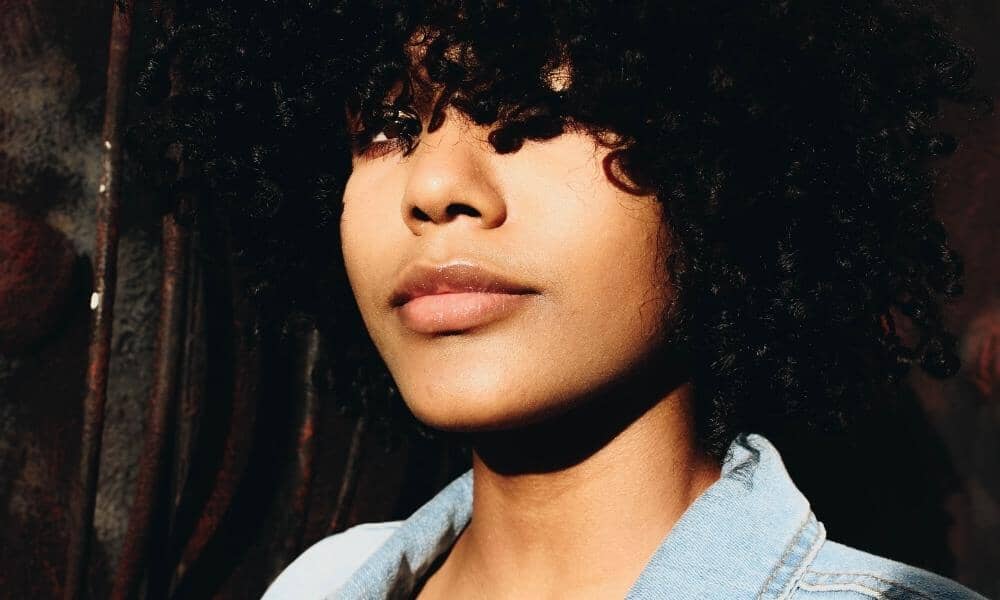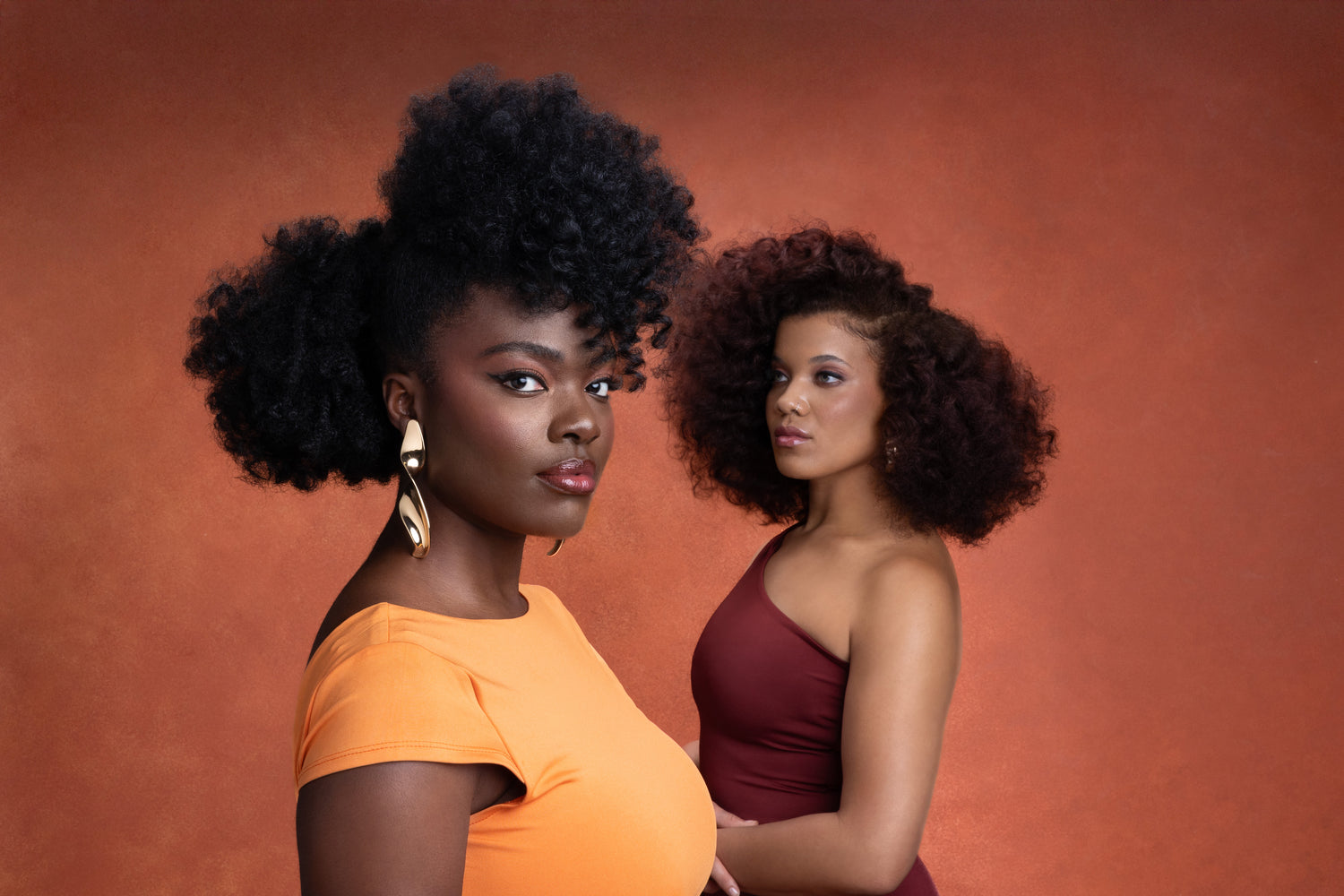Hair grows at about the rate of six inches per year, fact. Yet, so often we are left questioning why can we not see our hair growth and wondering if Afro hair only grows to a particular length.
Honestly, we understand these questions and today we are here to answer them, while dismissing any false assertions. Read on to learn about the hair's structure, hair growth and to get hair growth tips.
What Is The Structure Of Hair?
While hair grows at around six inches a year, the ends are fragile and as they wear away over time many people do not retain what grows out of the follicle because it breaks just as fast as it grows, which is why a lot of people believe their hair has stopped growing.
The cortex determine the strength shape and colour of your hair. It is made up of bundles of Keratin fibres joined together by strong disulphate bonds and weaker hydrogen bonds.
The cuticle protects the cortex, it can wear away and get chipped over time or due to rough handling, heat, or chemical damage, leaving the protein underneath vulnerable to breakage.
In order to optimise hair health to allow you to grow stronger, longer hair, it's important to one protect the oldest part of your hair AKA the fragile ends Maintain the hydrogen bonds that give the cortex its strength. Keep the cuticle in good condition.
It’s important to understand the difference between breakage and shedding. Hair shedding is a very natural part of hair growth it’s actually the full strand of the hair being lost during the telogen phase, which is when the hair is in its resting phase but has separated from the follicle. We lose up to 100 hair strands each day as your hair continuously goes through this phase it’s basically like losing dead skin.
Hair Growth Cycle Explained: How Fast Does Hair Grow?
So how fast does your hair grow? Generally, your hair grows half an inch a month, so roughly 6 inches (or 15 cm) a year, as we mentioned before, however, your hair growth is predominantly determined by your genetics (and not by how much you cut your hair, so put down the scissors and forget all about that old wives tale!).
To truly make sense of the questions: how fast does hair grow and what can help your hair grow, we need to begin by explaining the hair growth cycle. The cycle consists of three different stages: anagen, catagen and telogen.
At any given moment your hairs could be in different phases of hair growth, this is because the process doesn’t happen at the same time for every strand of hair.
Many genes determine how long each phases will be for each person's hair, which is why we said earlier cutting you hair won't speed up the hair growth process.
The 'growth phase' is called Anagen, where your hair can grow up to half an inch per month. This growth phase lasts anywhere between 2-7 years, so technically your hair could grow up to 42 inches. And want to know a fun fact: your hair grows a bit faster in the summer than in the winter!
The end of the growth phase is called the Catagen phase. This is a transitional phase that lasts about 10 days.
Then the final phase is the Telogen phase, where your hair stops growing and is released. Once the hair falls out, that follicle will remain dormant for three months, and then the process starts all over again!
How To Make Hair Grow Faster: 9 Top Tips
The reality is, a lot of people frequently complain about hair growth, when what they really mean is that they want to retain length. So why isn't your hair getting longer? It's probably because the ends are breaking just as fast as it grows, which is why we don't see the 'hair growth'.

So the real issue that we tend to have is with hair breakage (annoying stuff!!). As hair grows the cuticle, which is the outer layer of your hair that protects the cortex, is worn away and as that disappears so does the strength of the hair, then comes the breakage. Each of these elements deal with the protection and or repair of the cortex of each strand of hair.
But what can you do to reduce breakage and grow and maintain stronger longer hair? Read on for our top tips...
1. Avoid Restrictive Diets
Restrictive diets can play havoc with healthy hair growth as it can mean that your body and hair isn't getting the nutrients needed for healthy growth. Make sure you’re having five portions of fruit and veg each day and try to avoid sweets and fatty foods.
Protein-rich foods are known to support hair growth; think spinach, almonds, matcha tea, whole grains, eggs and fish. This is because when you eat protein-rich foods, your body produces amino acids, which in turn produce keratin (which is the structural material that makes up hair). Naturally, this ensures your hair is healthy, strong and shiny.
Also, get plenty of vitamin B, C and E. Vitamin B is responsible for the overall health of your hair, including its moisture, smoothness and production of sebum (your natural hair oil). Vitamin C ensures hair growth, renews tissues and helps your body to absorb iron (which transports oxygen to your hair follicles); and vitamin E helps stimulate circulation on the scalp.
2. Avoid Styling With Heat
If you have ever used a blow-dryer, hot flat or curling iron, or any other heat styling tool to 'tame' or style your curls and coils, you've probably heat damaged your hair because of their extreme temperatures of 70-250 °C. The increase of temperature causes increasing damage to your hair fibre from the outside to the inside.
Alternatively, you can switch blow drying to using a microfibre towel turban, as it will absorb the excess water in no time, have your hair in different protective styles or use no-heat straightening techniques.
3. Cleanse And Condition Your Hair Properly
Cleansing your hair helps prevent the build up of sebum and dead skin, therefore helping prevent issues with dandruff. When you cleanse your hair make sure to do a pre-poo using coconut oil to prevent continued expansion and contraction of hair called hydral fatigue which again, leads to breakage and split ends.

It is important to remember that during this process water is basically your best friend because our hair thrives with moisture. But remember, it is important to use a sulphate free shampoo like Swish; sulphates dry out the hair and damage the cuticle leaving the cortex exposed from earlier on.
Follow this up with a silicone free conditioner such as Swirl which looks after your hair not only currently but also long term – so you get all of the conditioning and none of the man-made polymer distress.
We recommend that you cleanse your hair every 7-10 days though some find every two weeks works well for them.
4. Make Moisture Your Top Priority
Water is actually our best friend in this process. It’s important to make the most of the water on your hair and use the LOC method when moisturising it.
First of all use a moisturising, water based liquid such as Sheen – a blend of aloe vera juice, grape seed oil, and essential oils, which strengthen the hydrogen and disulphide bonds that the hair is made of. Followed by a thick blend of oils such as Seal, a mixture of olive, coconut, jojoba and castor oil which help keep hair hydrated for longer.
The oils prevent the evaporation of the prior used water-based product. Finally use another water-based product that is thicker than the initial liquid moisturiser. A moisturising cream or leave in conditioner will work perfectly for this step. We recommend our Smooth natural moisturising hair cream as it uses a blend of lighter and heavier oils such as coconut oil and olive extract alongside fair trade shea butter. This method can be done liquid - oil - cream (LOC), or liquid – cream - oil (LCO) it is really a choice of preference, as either works.
5. Explore Protective Styles

Leaving your hair out sometimes is definitely a look, but always remember it’s not good to leave it out too often. Now everyone is a fan of a good protective style, whether it’s twists or braids, wigs or weave it’s nice to know that your hair is done, moisturised and protected.
These styles are important as they reduce mechanical damage, exposure to the elements, and friction. Still it remains so important to keep hair clean, conditioned and moisturised when in it is protective styles. For that you should check out our braid care set, to keep your hair growing comfortably while protected.
Remember it’s important to change your hair style every 6-8 weeks to let your hair breathe! Also a pro-tip for using bands to tie the hair as you begin the braid, soak them in oil as it causes less damage.
6. Protect Your Hair At Night
Each night it is essential to cover your hair because cotton cases absorb moisture, and generate a lot of friction when sleeping leading to breakage. It is best to use a satin bonnet to cover hair or sleep on a silk pillow (probably stick to the bonnet if you’re on a budget).
7. Create A Consistent Hair Care Routine
The secret to success is a word that was used earlier, the word is not cleansing, conditioning, style and no its not even moisture – though all of things are one hundred percent necessary - the key word is routine. It is really important to find a good and consistent routine to look after your hair. It is a journey, it will take a bit of time, but in the end it will also be worth it.
8. Go Easy On Chemical Treatments
Chemical treatments such as bleaching, relaxing, perming or straightening can cause hair damage and breakage. This is because the chemicals work by breaking down your hair to alter its shape or penetrating the cuticle to remove colour. We would suggest reducing or avoiding treatments so there is less stress put on your hair.
9. Style With Care
It’s time to ditch that fine tooth comb and broken bobby pins! We want to avoid damaging our hair at all costs and these combs and poor accessories can easily cause breakage.
Tip: Get rid of hairbands and ties with metal and plastic fastenings and treat your hair to the Afrocenchix Essentials Accessories Pack! It has everything you need to style your hair and was created with curly and coily hair in mind!
More Articles:
Why Is My Hair So Dry? 5 Common Causes & Fixes

